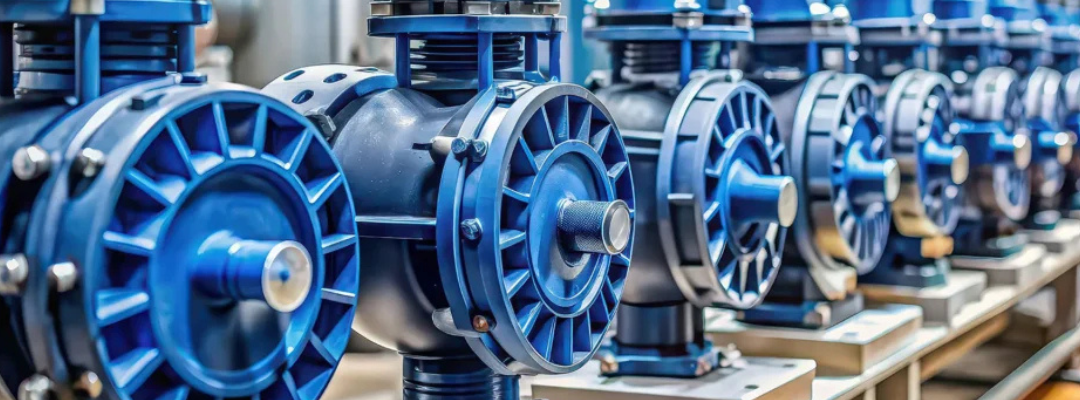A mud pump, also known as a drilling pump, is a heavy-duty, high-pressure pump used in oil, gas, water well drilling, and other construction applications to circulate drilling fluid (mud) through the drilling system. The mud pump plays a critical role in the drilling process by helping to remove cuttings from the well, cool and lubricate the drill bit, and maintain pressure in the wellbore.
Types of Mud Pumps:
- Triplex Mud Pump: This is the most common type of mud pump, which has three pistons or plungers that move to create pressure. It is efficient and requires less maintenance.
- Duplex Mud Pump: An older style of pump with two pistons or plungers, still used in some applications, though less common today.
Key Components:
- Piston/Plunger: The moving part of the pump that pushes the drilling fluid through the system.
- Fluid End: The part of the pump that handles the fluid and is in contact with the mud.
- Power End: This includes the mechanisms that drive the pistons or plungers to move the fluid.
- Valve Assembly: Controls the flow of mud into and out of the pump.
Mud Pump Applications:
- Oil and Gas Drilling:
- Mud pumps are an integral part of the drilling rigs used for oil and gas exploration. The pump circulates drilling mud (a mixture of water, clay, and chemicals) down the drill string and back up the annulus, transporting rock cuttings to the surface and maintaining well pressure to prevent blowouts.
- Key Roles:
- Removes cuttings from the drilling area.
- Cools and lubricates the drill bit.
- Maintains pressure to prevent well collapse or blowouts.
- Water Well Drilling:
- In water well drilling, mud pumps are used to circulate drilling fluids, helping to carry debris to the surface, stabilize the borehole, and keep the drill bit cool during operation.
- Key Roles:
- Assists in removing cuttings from the borehole.
- Stabilizes the borehole to prevent collapse.
- Provides a cooling medium for the drill bit.
- Geothermal Drilling:
- Similar to oil and gas drilling, mud pumps are used in geothermal drilling to circulate drilling fluids. The fluids help stabilize the borehole and transport geothermal material to the surface.
- Key Roles:
- Stabilizes the borehole during drilling.
- Cools the drilling equipment.
- Transports geothermal material to the surface.
- Mining and Construction:
- Mud pumps are also used in mining and construction for applications such as horizontal directional drilling (HDD), slurry transport, and tunneling. In these applications, the mud pump circulates drilling fluids that remove debris, stabilize the drilling hole, and cool the drill.
- Key Roles:
- Removes cuttings and debris.
- Stabilizes the drilled tunnel or hole.
- Provides cooling and lubrication for drilling equipment.
- Horizontal Directional Drilling (HDD):
- Mud pumps are essential in HDD operations, where they circulate drilling fluid to transport cuttings, stabilize the drilled borehole, and cool the equipment. This application is common in laying pipelines, cables, or utility lines.
- Key Roles:
- Transports cuttings to the surface.
- Stabilizes the drilled borehole.
- Cools and lubricates drilling tools.
- Hydraulic Fracturing:
- In hydraulic fracturing (fracking), mud pumps are used to inject water, sand, and chemicals into rock formations under high pressure to release natural gas or oil.
- Key Roles:
- Delivers high-pressure fluid for hydraulic fracturing.
- Ensures efficient fluid delivery to the wellbore.
Benefits of Using a Mud Pump:
- High-Pressure Delivery: Mud pumps are designed to generate the high pressures needed to circulate drilling fluids deep into the well.
- Continuous Operation: They are built for long, continuous use, necessary in large-scale drilling projects.
- Handling of Viscous Fluids: Mud pumps can handle thick, viscous drilling fluids with suspended solids.
- Durability: Made from robust materials to withstand the harsh conditions of drilling environments.
Key Considerations in Selecting a Mud Pump:
- Flow Rate: The capacity of the pump should match the needs of the drilling project.
- Pressure Rating: Ensure the pump can deliver the required pressure for the depth and type of drilling.
- Material Compatibility: Ensure the pump materials are resistant to wear and corrosion, as drilling fluids can be abrasive.
- Maintenance: Pumps should be easy to maintain, as they operate under tough conditions.
Mud pumps are indispensable for drilling operations, especially where heavy-duty circulation of drilling fluids is required to ensure efficiency and safety.

